Ingredients: Honey & Beeswax We decided to start this series off with ingredients that are near and dear to our hearts: honey and beeswax! We come from a long line of beekeepers. My dad was one, his grandfather before him, and now we keep the tradition going with my son’s bee hives. In addition to our love for bees, honey and beeswax happen to be “good for you” ingredients, too. What a good place to start! Honey
BeeswaxFor all these reasons - our love of honey and bees plus the “good for you” qualities - we use these ingredients a lot. Honey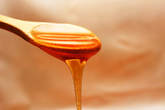 Honey is effective in soaps because the naturally high sugar content boosts the lather, which we all love. Given this, the natural instinct is to use a lot of honey in soap recipes. But beware! The downside is that the high sugar content can cause from-scratch soaps to overheat after they are poured into their mold, leading to cracks and discoloration. We can counter that by putting the soaps in a fridge or monitoring temperatures carefully. Like so many other tricks of the trade, we learned through a lot of trial and error! It is a trick to find that exact balance between using enough honey to get the soapy lather we all like and not using so much that it ruins the soap with unsightly cracks or discoloration. Beeswax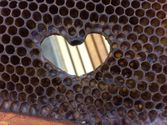 If the amount of honey determines the amount of lather on a soap, the amount of beeswax determines the hardness of the product. The hardness allows us to create a lotion that is portable, for example, yet the heat from your hands melts the butters and oils ever so slightly each time you use it so you get a little moisture at a time. For products that require a softer feel - such as balms - we use less beeswax. We want them to be soft and spreadable. Lip balms also use less so they easily glide over your lips. Each recipe has been tested for the optimal amount to get the right result. Lots of trial and error… and eventually… our very own, from scratch recipes. So, once we have a “good for you” ingredient that we know how to use, we get to work! Because honey and beeswax offer some unique properties that are so good for your skin, we use these ingredients in a lot of products. We use honey in soaps because of the incredible lather…. and also in one of our bath bombs. We also use a lot of beeswax, often in conjunction with honey. For our lotion bars, such as the Lux Lotion Bars, up to one-third of the total recipe is actually beeswax! For products that require a softer feel - such as our Honey Balm, our lip balms, or our Madly Mango Cuticle Balm - we use a bit less. Want to try some honey and beeswax products? Buy now by clicking on the pictures below! Click your favorite product above or...
1 Comment
All summer, I've been so busy with making different soapy goodies that tonight I decided to get dirty and make some seed balls. Playing in the dirt can be so relaxing! Mixed with some clay and Honeybee Wildflower seeds, the organic soil has become an easy way to plant "bee" friendly flowers just about anywhere you can toss out a seed ball! Easy for you and loved by our precious honeybees. So what is a Seed Ball? It's a combination of rich soil, some regular air dry clay and seeds of your choice. A seed ball is so easy to plant. You toss them wherever you'd like to add some flowers...a flower bed, along a highway or median, along pathways...get creative! It's a perfect activity to do with kids of all ages. The combination of soil and clay holds the seeds safely until Mother Nature provides the right amount of moisture and warm temperatures for proper germination. Seed balls can be planted any time of year.  How to make Seed Balls... Start out with some rich organic soil, some plain ol' air-dry clay, and Honeybee Wildflower Seeds.
 Each package has 20 hand-rolled seed balls ready for tossing. Each ball covers about 1 square foot. You can find them here...Honeybee Wildflower Seed Balls. Seed Balls can be planted anytime of year, so toss some now to enjoy a bright wildflower spring! Until next time...Happy Planting! ~~~~~~~~~~~~~~~~~~~~~~~~~~~~~~~~~~~~~~~~~~~~~~~~~~  Dad, Master Beekeeper Dad, Master Beekeeper My Dad was a beekeeper most of his life. He learned the skills from his grandfather when he was a kid. He dabbled with the bees as his 5 children grew up (but my Mom found that bees and kids didn't always mix well). So it wasn't until he retired at 65 that he got into full-fledged beekeeping again. Over the next 29 years, he was active with the bees each day and night, building all the equipment needed to manage his hives, supplying beekeeping products for local beekeepers, mentoring new beekeepers, bottling and selling his honey and loving life with his bees in central PA. In the spring of 2012, Dad had gotten his grandson (my son) into the world of beekeeping by making all the supers and frames needed to set up a new hive and mentored him with his first colony at his home in VA. He was passing on his love of these incredible creatures to his grandson like his grandfather had done for him so many years before. He adored the "girls", a nickname most beekeepers have for their hard-working bees, and was distraught when he was diagnosed with liver cancer at the tender age of 94 in June 2012 and had only days to live. It was bittersweet, but he asked my son if he would look after his hives for him. It was such a relief to him to know that the "girls" and his legacy would carry on. So that's how Dad's 6 hives of bees decided to make the move to the sunny south and I was recruited as "assistant" Bee-Mom. 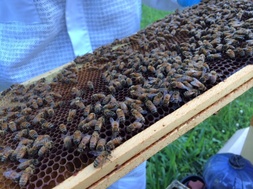 Little did I know what we were getting into! Once you get over the initial fear of all the buzzing around your head, the bees are incredibly addicting and managing them is an exciting adventure. My son sure is a chip off his Pap's block...what a natural! During the spring and early summer, honeybees will increase their numbers quite quickly to build up the colony so more honey stores can be gathered. If they get too large for the space they are in, they will "swarm". Swarming happens when they get too crowded and the Queen basically tells them that she is taking some of the colony with her and moving out to another space. Those bees that are left behind will then generate a new Queen and build up their numbers yet again when, all the while, the old Queen has found another suitable space (i.e. a hollow tree, an old building, your attic, etc.) to settle into with her part of the colony that followed her. As a beekeeper, one must monitor this "swarming" activity before it happens and split the colony. If the colony swarms, the beekeeper will lose half of the bees, but if the colony is split before the swarm, two colonies can be made from the original one. Once a split is done, often-times a beekeeper will introduce a new Queen into the old colony so their "downtime" in minimized. This past week, I was able to help with that introduction (ok, so I stood back and watched...but I was ready to jump in if Luke needed help). 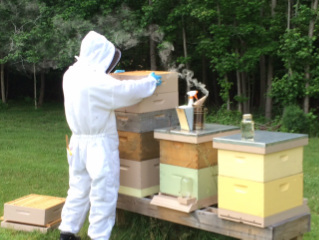 Once the real beekeeper got home, we were able to install each Queen into her new home. It's done by placing her in her cage within the frames of the lower super (box). As the bees in the hive cluster around the Queen's cage, they smell each other and get familiar. The bees eat away at the sugar plug which can take 24-48 hours depending on the number of bees and release the Queen. By the time the Queen is set free, all the bees are friends (well, we hope so!) and the Queen gets to work laying more eggs and building up the colony! |
Welcome to Tailored Tidbits!If I'm not in the kitchen cooking up new items for my shop, I'm sewing fabric baskets, taking care of our honeybees, pitching in on the latest project at my son's, or planning a trip somewhere with my daughter. Here, I'll share a "day in the life" at Tailored Touches! 
Sign up for the newsletter for an instant 10% off coupon.
Categories
All
Archives
February 2019
|






















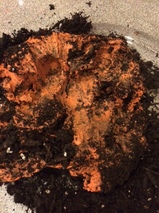




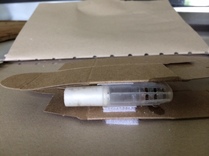



 RSS Feed
RSS Feed


